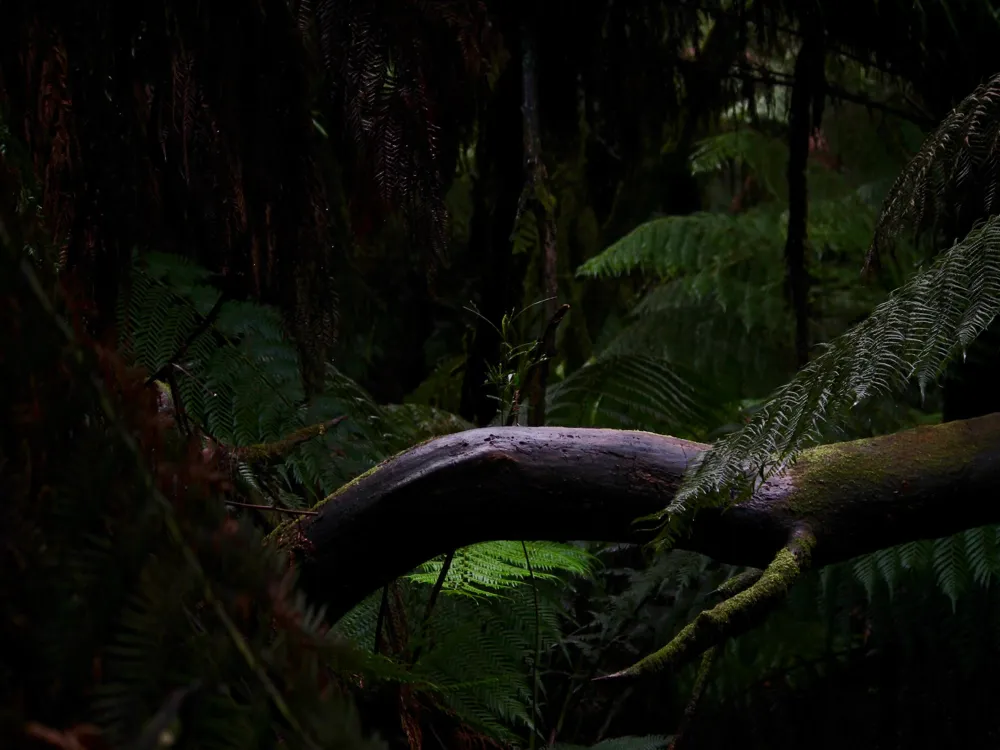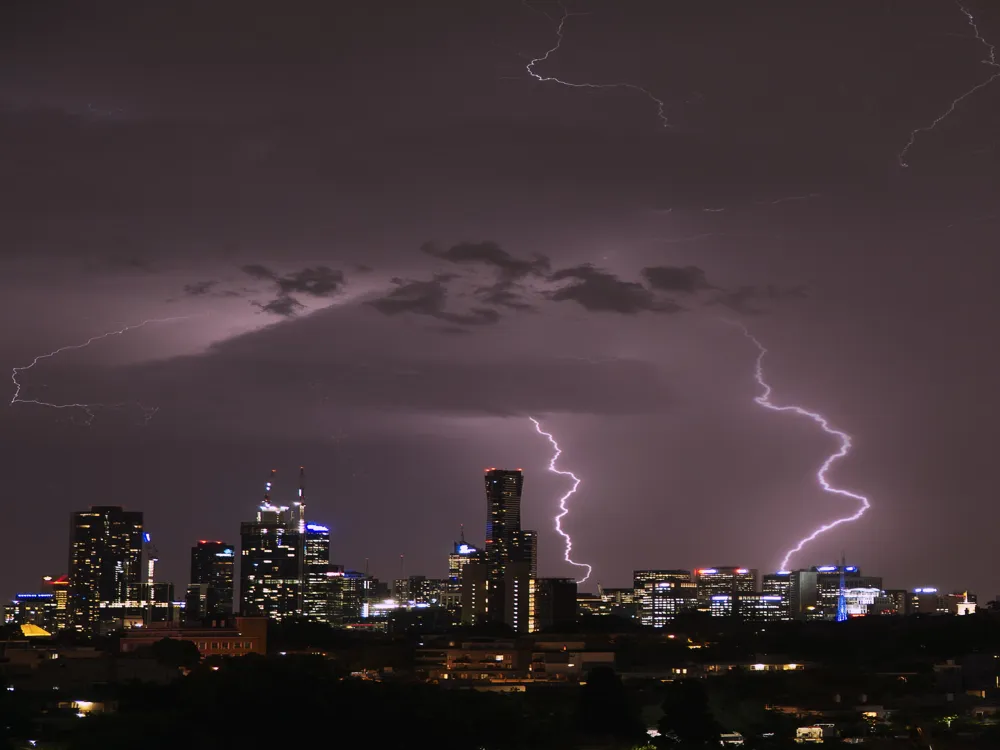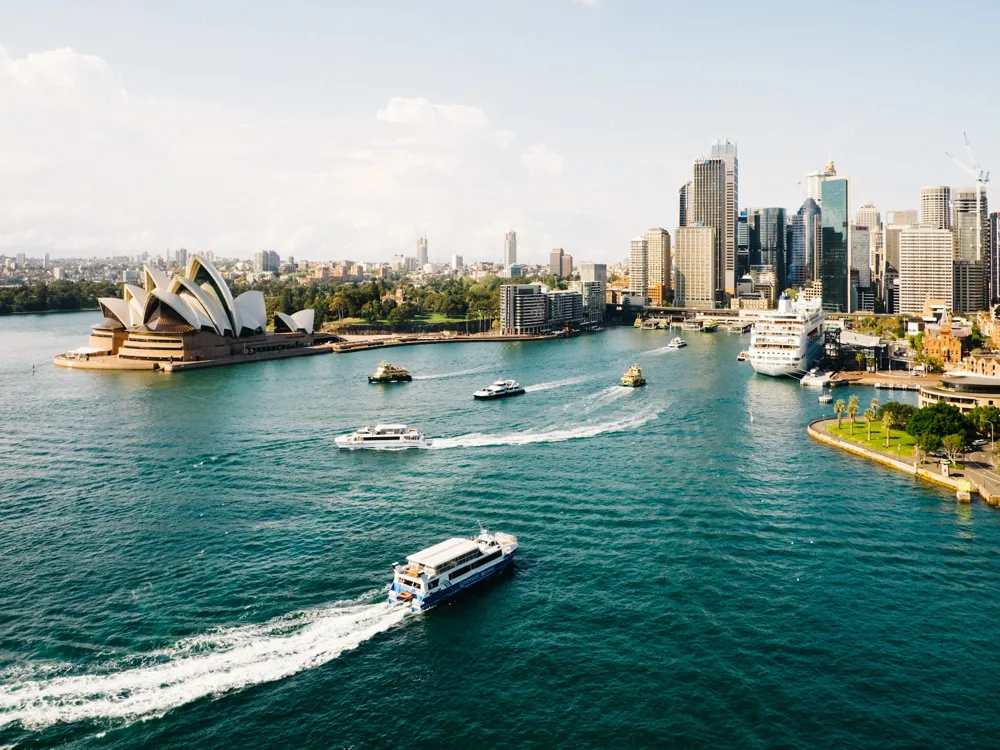The Great Ocean Road, a spectacular 243-kilometer stretch of Australian national heritage, traces the southeastern coast of Australia from Torquay to Allansford. Renowned for its breathtaking coastal views, diverse wildlife, and historical significance, this renowned road offers an unforgettable journey through some of Australia's most picturesque landscapes. Its construction began at the end of World War I and was dedicated to soldiers killed during the war, making it the world's largest war memorial. The route winds along the rugged coastlines, showcasing an array of majestic cliffs, sandy beaches, and lush rainforests. Visitors are enchanted by the iconic landmarks such as the Twelve Apostles, Loch Ard Gorge, and London Bridge – natural rock formations sculpted by the relentless Southern Ocean. The road not only offers scenic beauty but also serves as a gateway to several seaside villages, where local culture and cuisine can be enjoyed. The Great Ocean Road's significance extends beyond its scenic charm. It stands as a testament to Australia's history, particularly its construction, which was primarily carried out by returning soldiers. The road's development helped integrate remote coastal communities with the rest of Victoria, contributing significantly to the region's economic and social growth. The architecture of the Great Ocean Road is a fusion of natural wonders and human ingenuity. Unlike conventional architectural marvels, the Great Ocean Road's 'architecture' is largely defined by its construction, alignment with the coast, and the natural landmarks it encompasses. The road itself was carved out of rock and earth, hugging the coastline in a way that optimizes the panoramic views of the ocean and landscapes. This engineering feat required innovative construction techniques and an extraordinary level of human perseverance. Key architectural highlights along the Great Ocean Road include the Memorial Arch at Eastern View, a tribute to the soldiers who built the road. The arch is an iconic symbol, representing not just the start of the road but also the enduring spirit of its creators. Additionally, the various bridges, including the Great Ocean Road Bridge, showcase early 20th-century engineering skills. The natural rock formations, such as the Twelve Apostles, are another critical aspect of the road's 'architecture'. These limestone stacks, formed by erosion over thousands of years, stand up to 45 meters tall and offer an awe-inspiring sight. The unique shapes of the Loch Ard Gorge and London Bridge are other examples of natural 'architecture' that define the character of the Great Ocean Road. The ideal time to visit the Great Ocean Road is during the Australian summer, from December to February. The weather is pleasant, allowing for various outdoor activities. However, for those who prefer a quieter experience, spring (September to November) and autumn (March to May) are also great, with fewer crowds and mild weather. Accommodation along the Great Ocean Road ranges from luxury resorts to budget-friendly hostels and camping sites. Booking in advance is highly recommended, especially during peak season, to secure the best spots with ocean views or in the heart of the rainforest. The road is known for its winding turns and narrow sections. It's important to drive cautiously, especially for those unfamiliar with left-hand driving. Regular breaks are advised to avoid fatigue and enjoy the scenic viewpoints safely. While the road itself is a marvel, the surrounding regions offer lush national parks, wildlife, and historical sites. Dedicating time to explore beyond the pavement is highly recommended for a holistic experience of this unique area. The Great Ocean Road is easily accessible from Melbourne, the capital city of Victoria. The most common way to reach the starting point in Torquay is by car, which takes about 1.5 hours from Melbourne. Alternatively, there are bus services and guided tours available from Melbourne, offering a stress-free journey to this iconic destination. For international visitors, the nearest major airport is Melbourne Airport, from where one can rent a car or join a tour to begin their adventure on the Great Ocean Road. Read More:Overview of the Great Ocean Road
Architecture of Great Ocean Road
Tips When Visiting the Great Ocean Road
Best Time to Visit
Accommodation Options
Driving Safety
Exploring Beyond the Road
How To Reach the Great Ocean Road
Great Ocean Road
Melbourne
₹ 42,000 onwards
View melbourne Packages
Melbourne Travel Packages
View All Packages For Melbourne
Top Hotel Collections for Melbourne

Private Pool

Luxury Hotels

5-Star Hotels

Pet Friendly
Top Hotels Near Melbourne
Other Top Ranking Places In Melbourne
View All Places To Visit In melbourne
View melbourne Packages
Melbourne Travel Packages
View All Packages For Melbourne
Top Hotel Collections for Melbourne

Private Pool

Luxury Hotels

5-Star Hotels

Pet Friendly






















